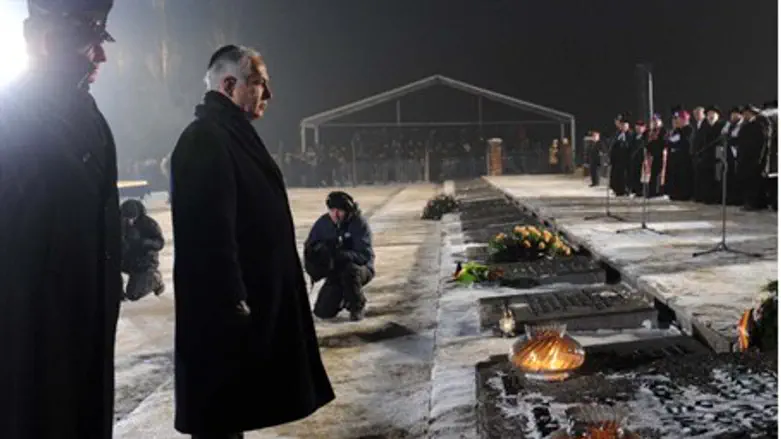
Almost 70 years after the first deportations of French Jews to Auschwitz, President Francois Hollande will on Friday inaugurate a new Holocaust memorial centre next to the site of the infamous Drancy transit camp in the suburbs of Paris.
Annette Krajcer, one of the dwindling band of survivors of that bleak time, will be there, returning for the first time since the war to a place from which nearly 70,000 people were sent to their deaths.
At 82, the retired Parisian doctor is pleased the new historical center will help educate a new generation about the horrors of that time and the role that the French played in the deportation of their Jewish compatriots.
But she also knows she will not be able to bring herself to go near the still-occupied housing blocs in which thousands were interned in abominable conditions on their way to the death camps.
"Too painful," she says quietly: the awful smell, the screams and the constant dread are all too easy to recall.
Krajcer was one of 13,152 Jews rounded up in Paris on the 16th and 17th of July, 1942 and detained in the Velodrome d'Hiver in the city.
Ordered by Nazi officers and carried out by French police and civil servants, the Rafle du Vel-d'Hiv was one of the darkest moments in the country's history.
It was also one of the most disputed, with the role of the French state and police only finally being fully acknowledged in a public apology issued in 1995 by then president Jacques Chirac.
"I was 12 when I was arrested along with my sister and my mother," Krajcer recalls, her voice trembling with emotion.
"My father wasn't there, he had been taken to work on a farm in the Ardennes (on the Belgian border)."
From the Velodrome, she was initially transferred to Pithiviers to the south of Paris, where she and her sister were separated from their mother before being transported to Drancy in a cattle truck, on August 15, 1942.
"Arriving, I felt like I was entering hell," she said. "There was a double barbed wire fence, there were watchtowers all around. The atmosphere was horrible.
"The buildings were grey, the courtyard was practically deserted. You could see the internees squashed up against the windows watching the new arrivals."
Installed in block one of the compound, the 12-year-old Krajcer was confronted with almost unbearable conditions.
"The bedrooms were made of concrete with nothing but straw on the floors -- there was nothing, no beds, no furniture.
"On each floor there were small cans we could use for going to the toilet but they were constantly full or overflowing. The smell was unbearable.
"We all had fleas, we all had scabies. The children were in an awful state."
Miraculously, Krajcer and her sister, who had been earmarked for transit to Auschwitz on the 19th of August, managed to avoid deportation.
"The day before we were due to leave, a young woman came and called us by our first names -- it was our cousin who had also been interned but had been put to work in the office of the camp."
The cousin's intervention ensured the sisters were transferred to block two in the camp before being released on September 29 into the custody of their French grandmother.
Their mother perished in the concentration camps but the two girls were reunited with their father at the end of the war, thanks to a couple of members of the Resistance who offered him shelter.